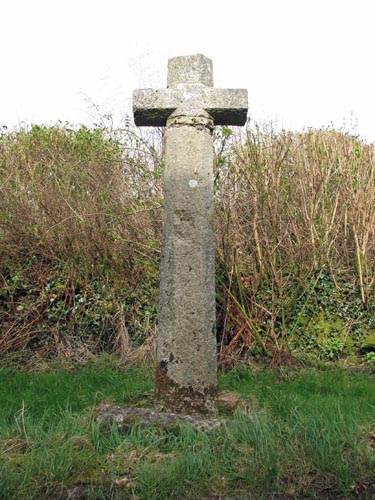
 |
 Location:
Across the footpath and immediately opposite the Walkhampton Church House. Location:
Across the footpath and immediately opposite the Walkhampton Church House.
O/S Grid Ref: SX/53720/70188 Longitude/Latitude (Degrees+/-): -4.06453/50.51315 Map location: Click here to view map. Purpose: Possible waymarker for the route between the Abbeys of Buckland and Buckfast or Churchyard Cross for the nearby Walkhampton Church. Size: 6 feet 7 inches (2.00 metres) tall. 2 feet 1 inch (0.65 metres) across the arms. Information: This cross is another that has been badly mutilated in the past. The socket stone was found built into a wall near the Church House and the shaft was found lying, abandoned, in the lane leading to the church. These were brought together and erected at its current site, in 1984, as arranged and funded by Mrs Helen Andrew, who lived nearby. The shaft has a wide chamfer for the first 12 inches above ground and a narrower chamfer for the rest of the way to the top. There are four holes showing in one side of the cross, which were made to take gate hangers. This obviously means that, at some point, it has been used as a gatepost, which accounts for the damage done to the head and arms. The socket stone is triangular in shape and is just showing above the ground. The socket stone and shaft are of different types and are unlikely to have been originally of the same cross. Seven years after the shaft and socket stone were re-erected, the restoration was completed by Bill and Sue Andrew with the addition of a new head, made by local stonemasons Dart & Francis. This marks an interesting repeat of history, for Commander Bill Andrew, who lives at the Church House, is the grandson of Vice Admiral Sir Malcolm Goldsmith, who in 1903 was responsible for the discovery and restoration of Goldsmith's Cross, as well as one of the crosses on Ter Hill.
Next door to the Church is the old Church House. This building is well documented and dates from the early sixteenth century. A plaque on the wall gives the date of 1698, but this was probably when alterations took place to build the second floor.
|